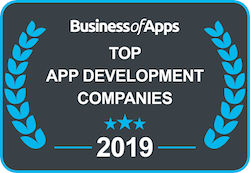You may need to include support on your app for people to be able to interact in the way you intend them to. For example, if you have users of your app that have a sight-related disability, you may even want to include a voice recognition offering all users an optimal experience.

Make Sure to Track Accessibility Debt
The concept of accessibility debt is rather familiar in the software and app industry, it is used to describe development work that arises when code that is easy to implement in the short term is used instead of applying the best overall solution. The technique of tracking accessibility debt is to access gaps in user functionality. Any issue that cannot be tackled immediately, will be added to the accessibility debt. For example, if the content is reading incorrectly on a particular screen reader, or is not responding to a user changing the font size within an app. By actively tracking this debt, we can ensure that it is regulated and consistently rectified.
Designing for Dyslexia
Dyslexia can affect people in different ways, with the severity of dyslexia ranging across different individuals. It can be detrimental to a person’s spelling, reading, writing and their overall fluency.
Due to this, apps should avoid uneven word spacing, placing black text on a pure white background, choosing italic fonts, and deploying long, unbroken paragraphs that make it quite hard for readers with Dyslexia. These factors may cause these readers to see words blurring together and look faint, therefore decreasing the accessibility of the app. Try to keep formatting plain and simple on an app to ensure that dyslexic people can also have a fulfilled experience that is not hindered in any way because of their disability.
Consider the Colour-Blind
When making and developing an app you must access any slight issues with it that could be seen as neglecting certain types of disabilities. When it comes to people who are colour blind you must make sure your app is accessible and inclusive to them also and completely avoids any sort of formatting system that includes colour coding.
Also, be sure to do your research on the different types of colour-blindness, there are two main types, these being:
● Red-green colour-blindness
● Blue-yellow colour blindness
These should be taken into consideration when trying to make your app more accessible, as using either of these two exact colour schemes should be avoided. This does not mean, however, that you should not use these colours at all, yet it is only the combination of the colours, so this is in no way banning you from using these colours in your app!
Why it is Important to Test Your Accessibility Features?
As soon as your app has been designed and developed, you must complete some tests to ensure that each feature works. For example, when relating previously to visual disabilities, testing if the dynamic font sizes are enabled. The app also must be verified to ensure that all features are transcribed correctly.
The development of mobile apps for the disabled and users with impairments requires a unique approach.
You must take into consideration the Web Content Accessibility Guidelines (WCAG 2.1) which outline the international recommendations for improved web accessibility. These accessibility provisions come with financial, moral, and legal advantages and there should be no reason for you not to implement accessibility within your business and your applications.
Contact Us
Get in touch with our experts here at Red C who can help you with your Web Integration, API, and backend services in London, which can transform your businesses processes and your customer experience offering. Contact Us using our contact form or by calling us at 020 3397 9028.



